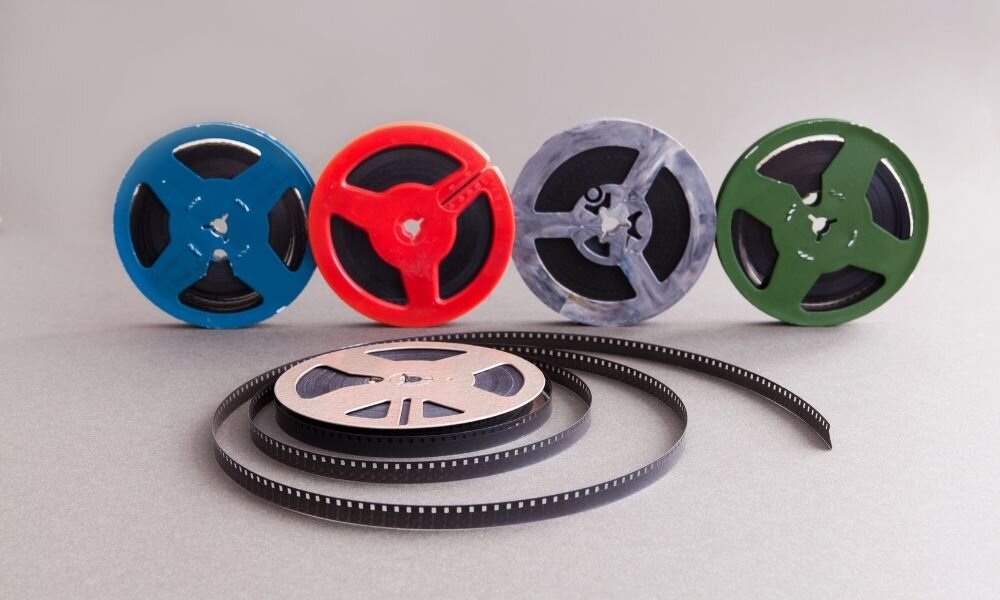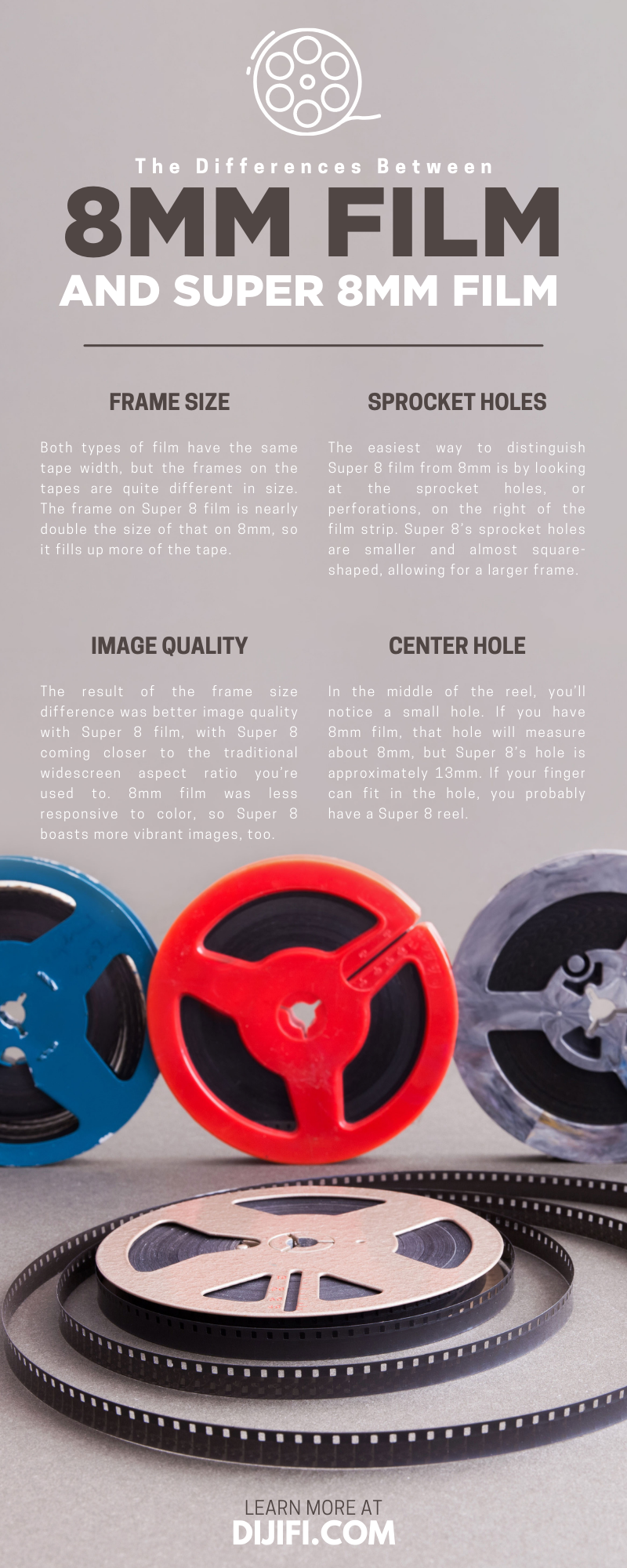The Differences Between 8mm Film and Super 8mm Film
Just what kind of film is in that canister you found in the basement? For most people, it isn’t easy to tell. Don’t worry; your old home movies aren’t lost forever. We’re here to teach you the differences between 8mm film and Super 8mm film.
The History of 8mm
First, let’s take a look at the backstory. Before the invention of 8mm film by Kodak, 35mm was the only film available, and only film studios really used it. It was impossible for families to use, as it was costly and cumbersome, so Kodak came up with a 16mm camera in 1923. Some people were able to make this new device work, but it was prohibitively expensive for most households.
1932
Kodak made another attempt at accessibility with a new camera that used “double 8”, which was similar to a 16mm spool, but it had 8mm sides that the operator would turn over and re-thread after the first half was exposed. When the time came for processing, the lab would split the strip down the middle and attach the second half to the bottom of the first.
A key distinction between 16mm and 8mm film is that 8mm is not, in fact, half the size of 16mm. 8mm is actually one quarter of the size of 16mm, meaning that this new camera was less cumbersome and allowed for significantly lower processing costs.
Not long after Kodak released their double 8mm camera, Bell & Howell came out with their own version, which used pre-split 8mm film. In time, this even more compact version became the go-to option for home videos.
1965
The 8mm camera’s popularity had been unquestioned for decades, but Kodak thought they could improve it. They introduced Super 8 film along with the Kodak Instamatic Movie Camera.
Threading film was no longer an issue, and built-in filters removed the need for different film stocks based on lighting. Different models also came with various lenses, with the most expensive option including a zoom lens.
1973
Super 8 film now came with a magnetic strip on the side that recorded sound along with the picture. This feature took away the need for separate audio equipment to capture sound, which was an added cost that many families weren’t willing to pay. This type of film is what the characters in Super 8 (2011) use to make their home movie.
The Differences
At first glance, 8mm and Super 8 film look very similar; they are both 8mm wide, after all. Thankfully, when you take a closer look, you will notice several differences that will help you determine which is which.
Frame Size
Both types of film have the same tape width, but the frames on the tapes are quite different in size. The frame on Super 8 film is nearly double the size of that on 8mm, so it fills up more of the tape. If you have a ruler available, you can check the width of the frame to figure out whether the film is 8mm or Super 8. The frame on an 8mm reel is 4.5mm, while the frame on a Super 8 reel is 5.79mm.
Sprocket Holes
The easiest way to distinguish Super 8 film from 8mm is by looking at the sprocket holes, or perforations, on the right of the film strip. Super 8’s sprocket holes are smaller and almost square-shaped, allowing for a larger frame. 8mm film has larger, rectangular, horizontally oriented sprocket holes that push the frame size to the left of the tape and require the frame to be smaller.
Image Quality
The result of the frame size difference was better image quality with Super 8 film, with Super 8 coming closer to the traditional widescreen aspect ratio you’re used to. 8mm film was less responsive to color, so Super 8 boasts more vibrant images, too.
You could also notice a difference in lighting between images that Super 8 film captured; 8mm film was very frequently underexposed due to the amount of light necessary to expose a frame properly. Super 8 also offered an ISO of up to 500, allowing for better results when filming in low light.
Center Hole
In the middle of the reel, you’ll notice a small hole. If you have 8mm film, that hole will measure about 8mm, but Super 8’s hole is approximately 13mm. If your finger can fit in the hole, you probably have a Super 8 reel.
Is There Sound?
8mm film strips are unlikely to come with sound, as there were very few cameras built for 8mm film that could record sound. However, one could add a magnetic strip later in the process, so it makes sense to check for a thin strip running along the reel adjacent to the sprockets. If you see a rust-colored or yellow stripe, you’ve got sound.
As we mentioned earlier, Super 8 film came with a magnetic strip starting in 1973. Look for that same stripe on your Super 8 film, along with a thicker stripe on the other side of the film, to tell if it contains sound.
Film Decay and Transferring to Digital
Michael J. Fox once said, “Pain is temporary; film is forever.” Unfortunately, that isn’t quite true. If you’ve ever projected your old home movies, you might have noticed some level of film decay. Improperly stored film can, and likely will, suffer significant decomposition. It could get to the point where the film is no longer even watchable.
Proper storage is a delicate task and a process that you could pay a lot of money to get right. Nitrite degradation, color dye fading, and vinegar syndrome can all be killers to your home movies. Luckily, we offer an 8mm film to digital conversion service, covering both 8mm and Super 8 film. While film is not forever, digital is.
Now that you know the differences between 8mm film and Super 8mm film, you can focus on protecting your family memories. Please don’t waste any more time; digitize your film before it decays.


